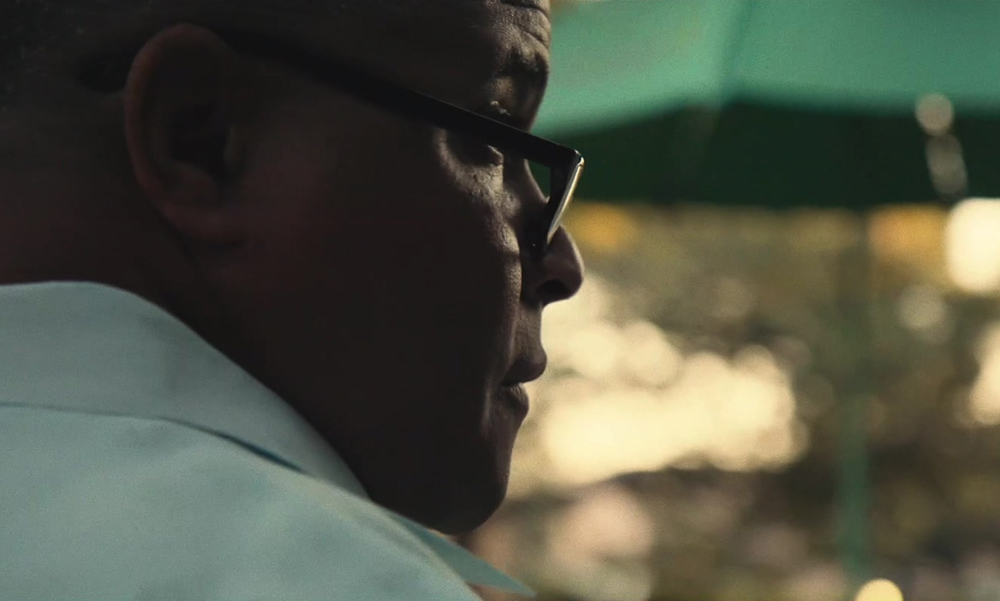In 2007, Margaret Brown was filming an interview for “The Order of Myths” when she got the first hint she might need to make a follow-up. Seeking answers as to why her hometown of Mobile, Alabama continued to have two separate Mardi Gras celebrations for the Black and white communities nearly a half-century after the state had been desegregated, the filmmaker found herself in the living room of Stefannie Lucas, the then-current Black Mardi Gras queen when her grandfather mentioned off-hand that the family had settled in the region after their descendants had come over on the Clotilda, the last ship known to bring slaves from Africa to America. Brown shot a glance over at her cinematographer since not long before they had interviewed Helen Meaher, who was selected as the Mardi Gras queen in the white part of Mobile and was known to be a relative of Timothy Meaher, a local land baron who was thought to be responsible for bringing the Clotilda over, betting that even as the United States was on the precipice of a Civil War in 1860, he could get one final batch of slaves to work his crops.
The Clotilda was referenced in “The Order of Myths,” but Brown could only tell so much of the story when there was little available evidence that existed of the Clotilda, downplayed as a myth by some when it was never recorded in Alabama’s official history and the only ones to ever speak of it were the descendants of those on the ship that now live in Africatown, a community founded by former slaves and remains predominantly Black. The story rarely made it even the three miles out to downtown Mobile, but over a series of conversations that Brown would have with Dr. Kern Jackson, an assistant professor at the University of South Alabama who has long been a caretaker of the history in the area, the director sensed the tide was turning and a decade later, she’d be making “Descendant,” a triumph of the oral tradition when the story could be told between tapes Jackson had collected over the years from locals who carried memories of the Clotilda from one generation to the next and interviews Brown would conduct in the present day with the likes of Joycelyn Davis, Veda Tunstall and Emmett Lewis, who actively work towards having their family history acknowledged as part of American history.
After all their heavy lifting, “Descendant” bears witness to another kind when the remnants of the Clotilda were unearthed in 2019 and equally crucial, there was renewed interest in the publication of Zora Neale Hurston’s “Barracoon: The Story of the Last ‘Black Cargo,’” a nonfiction account of what happened on the ship from one of its passengers Cudjoe Lewis, that had been long disregarded after Hurston refused to adjust Lewis’ way of speaking to editorial standards of the time. Hurston’s text reverberates now as Brown gets descendants such as Davis and Lewis to read passages aloud, but from the unobstructed platform of such a marvelously constructed film, the words carry even more weight when they’ve been held back for so long and seem more potent than ever when decisions are being made about how to recognize the Clotilda, potentially making it a tourist attraction that could finally bring a windfall to Africatown or further enrich the Meahers, who only built upon the property and wealth they accrued during their days of owning slaves and found new ways to pollute the community by leasing out their land to toxic paper mills.
After Brown made “The Great Invisible,” a remarkable look at the oil and gas industry from inside of it in between her two films about Mobile, “Descendant” feels like the magnificent culmination of her work to date, exploring original sins that subtly and irrevocably shape our current moment, and she found an ideal partner for her latest film in Essie Chambers, a novelist as well as a producer who clearly shares Brown’s approach to sprawling and complex stories made tender by the telling. With the film now in theaters and on Netflix after first making waves at the Sundance Film Festival earlier this year, Brown and Chambers spoke about helping to amplify this long neglected history, collaborating with the Africatown community to get as close to the truth of the matter as possible and the satisfaction of already starting to see this story get out into the world in a bigger way.
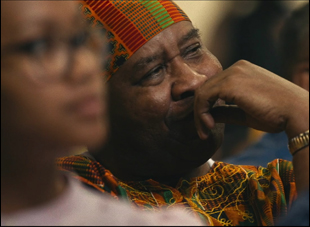
Margaret Brown: After “The Order of Myths,” a lot of the people who talked to me in that movie because my grandfather had introduced me to [them], and they saw the film and didn’t want to talk to me [again], specifically the Meaher family. When I was started making [“Descendant”], I thought that they would talk to me because Helen [Meaher] traveled with the movie. She came to Sundance and traveled to Europe and spoke on behalf of the film, so I thought, even though no one else could get her to talk, that she would talk to me, but she didn’t and I’m not sure if it had anything to do with my grandfather, but I think it was more like, they never talked to anyone about the Clotilda.
So I definitely had to think, “Oh my gosh, this is not another film [that’s about Mobile]. It’s about America.” “The Order of Myths” is about whiteness and Blackness in the South, but I think of that film as more about white anthropology. This film was clearly [about Blackness, and for me] it was impossible. So I recalibrated, and it was scary. I met Essie at MacDowell. She’s a writer and a producer and, as friends, we just started talking about the movie and blind spots that I had, and just my fear about getting the story right as a white woman. She came on as a creative producer, [helping make] many creative decisions that have nothing to do with race, but, along with other partners, was the main partner in really helping me navigate that.
Essie Chambers: Well, Margaret and I are friends, and that was one of the first things that we said to each other, “We can’t do this unless we are brutally honest in lot of a lot of ways.” And I’m a black woman and a storyteller, so the ways that my identity intersected to help this film sometimes took on the form of just identifying things. With a film like this, I always say that the difference between it being a film about Black people for a white audience versus a film for everyone is a lot of small choices, so we all collectively just really made sure that everything that we were doing, from the language that we use, even with each other, was centering Blackness.
From what I understand, there was a level of collaboration with the subjects that was new to one of Margaret’s films. What was it like asking people to participate?
Margaret Brown: Because I’m a white person, and it’s their story, it’s not my story, I wanted to make sure that [the people we spoke to] understood the parts of it, especially the parts with Zora Neale Hurston, why I was using it. We talked about it together, and I’m also asking them to act [to a certain degree] and [before in my films], I’m usually just shooting them in meetings and verite scenes, like interviews, but asking someone to read something and respond to it, and talk about why they’re reading it, and put them in situations that are [in settings such as] a plantation home, an industrial area, these are all decisions I’m making as an artist, and I didn’t really feel comfortable making those decisions without involving them as collaborators. Also, it’s fun to collaborate and to make these choices together. I wanted this film to have joy in it, and collaboration is part of that joy.
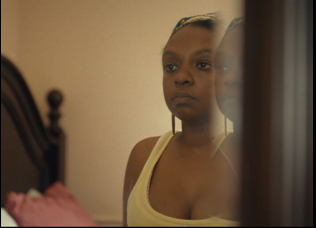
Margaret Brown: I can’t even really remember, but I read “Barracoon” over and over and over because it’s so connected to our story, but the real thing with me with Zora Neale Hurston was actually reading her letters. That’s where I fell in love with her as a creator, as a writer, and obviously as a filmmaker, because her films [as a student of anthropology] is all over the film, and it’s incredible. She’s got such a good eye, and just as a voice, she just became so alive for me, I just got completely obsessed with her. And I know that Kern [Jackson], a lot of his work as a folklorist is totally steeped in the tradition of Zora Neale Hurston, so it was cool to watch in the film, her hand over the torch to him [when] his field research is all over the film, too.
Essie Chambers: Zora’s very much the spiritual guide of the film, and we could have made 10 different films, it’s such a dense and layered story. She is the poetic glue, and just from a literary perspective, “Barracoon” didn’t get published until 2018, because she wanted it in the original dialect, and [the publisher] didn’t want it to be in dialect, so it was a buried history for all of that time and the idea that this person only got to tell this story decades after in 2018, the parallels are haunting and empowering, so it made sense on so many levels. A lot of people know [Hurston] as a novelist and a writer, but they don’t understand that she was an anthropologist and a filmmaker, so, as Margaret was saying, this idea that we have Zora and now we have Kern, and drawing that line between the two was also part of the way to hold all these pieces together.
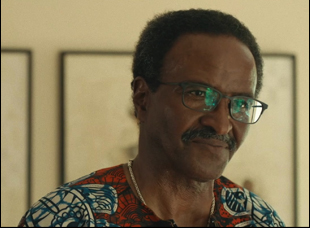
Margaret Brown: All my films are dense and have as many layers as I can fit in and not confuse people, so, it was really figuring out how to do that in a way that sang and had poetry to it, balancing the Zora scenes with the [Clotilda], with the story of the environmental racism, with the story of the descendants, and the Meahers, and also just getting to watch the growth of characters over time. You watch Joycelyn [Davis] and Veda [Tunstall] become these leaders, and Emmett [Lewis] was a leader probably from the minute he came out, but you got to witness the community go through this growth, and when the film ends, we’re at a point where it could go a lot of different ways. So editorially, it was all about balancing these and it was very difficult. For a long time, the film was kind of working, but when the music came in, that was really helpful. I got to collaborate with two incredible composers and right at the end was the last burst we needed.
Was there anything that happened during the production that changed your ideas of what it could be?
Margaret Brown: COVID, because we have a lot of elders in our film, and it’s terrifying to shoot elders during COVID, so we had to stop for a while. We did end up shooting some [interviews] with younger people outside, but that was the hardest part and in a way, it was a blessing because we got to film more over time. But it made the budget harder and we had to really figure out, “How are we going to do this?” because we didn’t really know. Also, are we going to shoot people with masks on?
Essie Chambers: And the way that they were meeting with each other completely changed. With an activist community, it’s so much about being in the same room together, and even the way that they, all their meetings became Zoom meetings, which wasn’t cinematic. We can’t have a Zoom movie.
Margaret Brown: No, not going to ever put Zoom in a movie. I’m sorry. [laughs]
There was this moment of increased media attention also when the Clotilda was raised from the sea. Did seeing how it was portrayed elsewhere influence how you ultimately wanted to tell this story?
Margaret Brown: Well, they don’t really stay. Sometimes they would try to block us from access. That was always annoying, because I’m from there, and some big media outlet would come in and try to block me, the independent filmmaker and often people in the community would step up and say, “Margaret’s from here, you need to let her in.” But the zooming in and zooming out is the thing – we are telling a story that is deep and wide, and that is only possible over time.
Essie Chambers: One of the first things that I heard when I joined the project [was locals] kept saying, “Yeah, people are coming in and out. Margaret just keeps coming back.” There are hot moments where there’s a lot of attention, but Margaret and team are showing up at the small moments — in the moments of celebration, and the moments of community ceremonies.” That texture is where the real story lives.
Margaret Brown: That’s where the fun is.
Essie Chambers: We were the only people there the day that the community were told that they found the ship because we had gotten maybe a little leak from the community that we should show up that day, and they didn’t know what was going to happen. But because we were so firmly embedded in the community, we got told things like that, so we were there when it was.
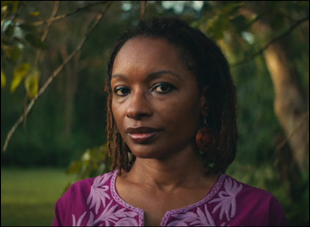
Margaret Brown: It was crazy when the trailer dropped yesterday, because there’s been a few people who’ve gotten to see the film at festivals like Sundance, but no one’s really seen it. So the minute the trailer dropped, I was like, “Oh shit, this is happening.” [laughs] It was really exciting, and I’m so excited for them and for what this could do for the community.
Essie Chambers: The trailer, I think, somehow made it real in a different way and and it very much captures the soul of the movie.
Margaret Brown: And there’s a lot of people watching it. [laughs] We’re tracking the YouTube watches.
“Descendant” will open on October 21st theatrically in Los Angeles at the Monica Film Center and the IFC Center in New York and start streaming on Netflix.




